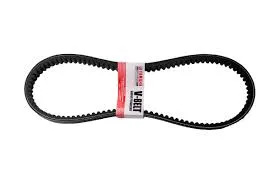- Arabic
- French
- Russian
- Spanish
- Portuguese
- Turkish
- Armenian
- English
- Albanian
- Amharic
- Azerbaijani
- Basque
- Belarusian
- Bengali
- Bosnian
- Bulgarian
- Catalan
- Cebuano
- Corsican
- Croatian
- Czech
- Danish
- Dutch
- Afrikaans
- Esperanto
- Estonian
- Finnish
- Frisian
- Galician
- Georgian
- German
- Greek
- Gujarati
- Haitian Creole
- hausa
- hawaiian
- Hebrew
- Hindi
- Miao
- Hungarian
- Icelandic
- igbo
- Indonesian
- irish
- Italian
- Japanese
- Javanese
- Kannada
- kazakh
- Khmer
- Rwandese
- Korean
- Kurdish
- Kyrgyz
- Lao
- Latin
- Latvian
- Lithuanian
- Luxembourgish
- Macedonian
- Malgashi
- Malay
- Malayalam
- Maltese
- Maori
- Marathi
- Mongolian
- Myanmar
- Nepali
- Norwegian
- Norwegian
- Occitan
- Pashto
- Persian
- Polish
- Punjabi
- Romanian
- Samoan
- Scottish Gaelic
- Serbian
- Sesotho
- Shona
- Sindhi
- Sinhala
- Slovak
- Slovenian
- Somali
- Sundanese
- Swahili
- Swedish
- Tagalog
- Tajik
- Tamil
- Tatar
- Telugu
- Thai
- Turkmen
- Ukrainian
- Urdu
- Uighur
- Uzbek
- Vietnamese
- Welsh
- Bantu
- Yiddish
- Yoruba
- Zulu
Nov . 05, 2024 04:45 Back to list
motorcycle timing belt
Understanding Motorcycle Timing Belts Essential Knowledge for Riders
Motorcycles are intricate machines that rely on a myriad of components working in synergy to deliver power, speed, and safety. Among these components, the timing belt plays a crucial role in ensuring that the engine operates smoothly and efficiently. For many motorcycle enthusiasts, understanding the significance of the timing belt is vital not only for the maintenance of their bikes but also for enhancing performance and longevity.
What is a Timing Belt?
A timing belt is a looped strip typically made of rubber or reinforced with fiberglass, located inside the engine. Its primary function is to synchronize the rotation of the crankshaft and camshaft(s), ensuring that the engine's valves open and close at the appropriate times during each engine cycle. This synchronization is essential for maintaining optimal performance and preventing catastrophic engine failure.
Timing belts are designed to last for a specific duration, usually between 40,000 to 100,000 miles, depending on the manufacturer's specifications and the motorcycle's usage. Many modern motorcycles now utilize timing chains instead of belts; however, those equipped with timing belts require regular monitoring and timely replacements to avert potential engine damage.
The Importance of Timing Belt Maintenance
Like any component in a motorcycle, the timing belt requires regular maintenance. Neglecting its upkeep can lead to serious issues, including engine misfires, poor performance, and, in the worst-case scenario, a complete engine failure. A snapped timing belt can result in the camshaft and crankshaft losing synchronization, which can lead to valves colliding with pistons, causing extensive and expensive damage.
To prevent such failures, riders should adhere to the following maintenance tips
1. Inspection Regularly inspect the timing belt for any signs of wear, such as cracks, fraying, or glazing. If you notice any of these signs, it’s crucial to consult a mechanic or refer to the owner’s manual for guidance.
2. Replacement Schedule Follow the manufacturer’s recommended replacement schedule. Even if your timing belt appears to be in good condition, old belts can deteriorate over time due to heat and stress.
motorcycle timing belt

3. Tension Adjustment Ensure that the timing belt maintains proper tension. An overly tight or loose belt can lead to premature wear and failure.
4. Professional Service If you are not comfortable performing a visual inspection or replacement yourself, enlist the help of a qualified motorcycle mechanic. They can provide a thorough inspection and replace the timing belt as needed.
Signs That You Need a Timing Belt Replacement
Riders should be aware of warning signs that indicate it might be time for a timing belt replacement
- Unusual Noises If you hear a ticking or slapping noise coming from the engine, it could be a sign that the timing belt is loose or has deteriorated.
- Engine Performance Issues A sudden drop in performance, such as sluggish acceleration or misfiring, could be traced back to a timing issue caused by a failing belt.
- Check Engine Light If your motorcycle's check engine light illuminates, it could be indicative of timing-related problems. It’s advisable to have the bike inspected promptly to diagnose the cause.
Conclusion
In conclusion, the timing belt is a crucial component of motorcycle engines that requires careful attention and maintenance. By understanding its function and the importance of regular inspections and replacements, riders can significantly reduce the risk of engine failures. A well-maintained timing belt not only ensures the longevity of the engine but also contributes to the overall performance and riding experience. Whether you're a seasoned rider or a newcomer to the motorcycle world, keeping an eye on your bike's timing belt is undoubtedly a step toward responsible motorcycle ownership. Remember, a smooth ride starts with a well-tuned engine.
-
Upgrade Power Steering Pump Belt for Smooth, Quiet Operation
NewsAug.27,2025
-
Precision Timing Belt & Chain: Engine Performance & Durability
NewsAug.26,2025
-
Precision Lathe Drive Belts: Durable & Reliable Performance
NewsAug.25,2025
-
84.5 Serpentine Belt: Durable & Precision Fit for Your Engine
NewsAug.24,2025
-
Premium Ribbed Drive Belts for Quiet Power Transmission
NewsAug.23,2025
-
High-Performance Vehicle Timing Belt for Engine Precision
NewsAug.22,2025

